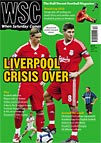 Natalia Sollohub examines whether a proposed semi-professional women's super league will actually happen
Natalia Sollohub examines whether a proposed semi-professional women's super league will actually happen
Anyone with even a passing interest in the women’s game in England will get a sense of déjà vu on hearing that a new summer league is due to kick off in 2011. The same announcement was greeted with much rejoicing just over a year ago with more than the required eight teams preparing applications to join the semi-professional Super League.
With the deadline looming, an FA statement was made in April to the effect that the launch, planned for next March, would be postponed by a year. By June, the collapse of Setanta led to the following explanation: “The FA derives most of its income from its broadcast contracts. These revenues are currently under considerable stress and as a result a number of the FA’s projects have been deferred.” (Anyone remember the National Football Centre proposal at Burton on Trent?)
Those with longer memories may even recall that a fully professional league was first heralded at the turn of the century by the FA chief executive at the time, Adam Crozier. Neither Crozier nor his ambitious plans lasted very long and those still involved in women’s football could be forgiven for a bit of scepticism. But the England Under-19 head coach and Everton manager, Mo Marley, is not alone in her optimism when asked whether she thinks it will now get off the ground: “I think it has to. The clubs have to change in line with the progress that we’re making from an international perspective, where we’ve rocketed for the last ten years, and the only way to do that is to enhance what’s happening within the clubs.”
With 17 England internationals now on yearly contracts with the FA worth £16,000 each, the international scene is becoming ever more professional. The proposed summer league’s semi-professional set-up and the promise of FA funding and increased sponsorship potential should make cancellations due to soggy or unavailable pitches a thing of the past. And with female players finally being able to watch their elite counterparts without foregoing their own matches it is hoped that the momentum of England’s recent form can at last be harnessed.
After failing to qualify for successive World Cups and coming bottom of the group in the previous two European Championships, England’s record now reads, rather more impressively, one World Cup quarter-final and a Euro final in the last two years. But while this has seen them climb to eighth in the world ranking, England and Arsenal captain Faye White acknowledges that their success has not rubbed off on league attendances: “It hasn’t changed as much as you would hope. As a player, when you’ve achieved something, you’d hope that you would see more girls and more families coming to watch our games. But I think it’s hard for them because if I was a young player and I had a choice between playing or going to watch a game I know I’d
play as well.”
The eventual 6-2 humbling of England by the reigning World and European champions Germany in Helsinki may not have been the result anyone wanted but at least the coverage was worthy of a championship final. The broadsheets all sent correspondents and despite the heavy defeat most reports rightly described how England had put up a decent fight before tiring in the last half-hour of a long tournament.
As well as the expectation that semi-professionalism will allow England to compete more equally with other top nations in terms of fitness, it is hoped that an elite league that runs throughout the summer will bring women’s football out of the shadow of the Premier League in much the same way the League of Ireland transformed itself six years ago. The main difference is that this new league will be in direct competition with another women’s league that boasts the best of English talent, the WPS (Women’s Professional Soccer) in the USA.
Running from March through to August and paying the players an average of $32,000 (£20,000) for a seven-month contract, this league showcases some of the world’s finest talent which this year included six of England’s Euro 2009 squad, a number that could well rise for WPS’s second season. Whether a semi-professional league in England can tempt those players back or whether the Super League will have to be content with stemming the flow in years to come is the next big question to be answered.
From WSC 274 December 2009